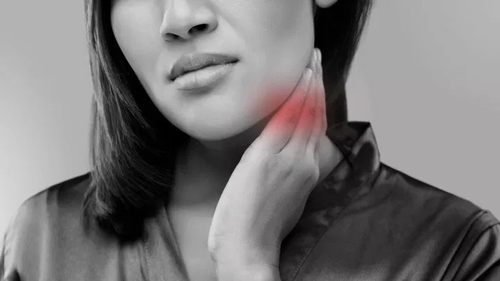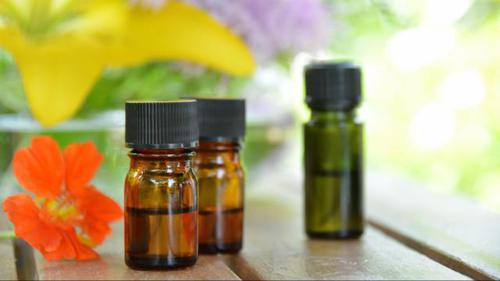Symptoms and Major Causes of Swollen Lymph Node and Rashes
You often experience a change in the color, texture, and appearance of the skin; this is known as a rash. A rash can be limited to a particular part of the body and may affect the whole skin. It can last from 5 to 20 days.
Lymph nodes are actually part of the lymphatic system which is a component of our immune system. Lymph nodes are categorized into many groups, they are soft, small and bean shaped nodules of tissues. These lymph nodes are mostly found in front of the neck, on sides of the neck, in your armpits, under the chin, and in the groin.
Sometimes you may find a lymph node to be swollen, then a rash follows, if this happens you need to pay more attention to the condition and the following information will help you.

7 Major Causes of Swollen Lymph Node and a Rash
A swollen lymph node in the neck and now a rash is sometimes indeed a very serious problem. You need to have the exact diagnoses for it because there are many different causes, then follow the treatment as recommended by your doctor. Some of the prominent causes of the itchy lymph nodes are discussed below.
1. Infectious mononucleosis
This is mostly caused by a virus which is known as the Epstein-Barr virus (EBV). Mostly high school and college students are victims of this virus. The symptoms for this virus include swollen lymph glands, fever, headache, night sweats, body aches, and sore throat. These symptoms may last up to 2 months.
2. Pharyngitis
This is also an infection which is caused by fungi, bacteria, and viruses. Sometimes it is due to non-infectious agents as well such as dry air, smoke inhalation, allergies, and acid reflux. This inflammation of pharynx is mostly found in the back of the throat and results in irritation and soreness. Your throat becomes itchy and scratchy due to this virus. This irritation and soreness can lead to other symptoms which include a cough, runny nose, sneezing, fever, fatigue, body aches, chills, rash, and swollen lymph nodes.
3. Fifth disease
This is actually round, bright and red rash on your cheeks. This is mostly experienced by kids as compared to adults. Fifth disease can cause fatigue, headache, sore throat, low fever, diarrhea, nausea, and runny nose. The symptoms of the fifth disease include a lacy-patterned rash on your arms, upper body, and legs. These symptoms are more visible after a hot bath or shower.
4. Tonsillitis
This is another bacterial and viral infection affecting the tonsils and lymph nodes. It can cause tender tonsils, swollen and white spots on the tonsils. Some of the symptoms include fever, chills, bad breath, headache, sore throat, and difficulty while swallowing.
5. Inflammation disorder
Inflammation is actually the defense mechanism of our body. Inflammation disorder means our body is vulnerable to many diseases. If the inflammatory response of the body is not working, the wounds and infections would never heal.
The symptoms of inflammation disorder include extreme pain, swelling, heat, immobility, swelling, and redness.
6. Chickenpox
Chickenpox is actually small rashes which are accompanied by body aches, fever, sore throat and loss of appetite. Chickenpox remains very contagious until all the blisters are not crusted. Chickenpox causes red, fluid-filled blisters which are very itchy.
7. Leukemia
This term is used for the multiple types of blood cancer which occurs when the white blood cells in the bone marrow are out of control. They are both chronic and acute as well. The cell types in leukemia involve myeloid cells and lymphocytes. You may have painless, swollen lymph nodes mostly in the neck and armpits.
You may experience excess sweating at night times, fatigue and weakness, pain in your bones and weight loss. Symptoms include red spots on the skin, bruising easily, bleeding easily, chills, fever, and other frequent infections.
Quick Home Fixes for Rashes
Sometimes you need to see a doctor and receive professional treatment, however, you can try things on your own when it is not serious. There are some home remedies for you to treat these rashes. And please get your doctor's approval ahead.
- Wash infected area
Care of the skin is very important, especially when it is inflamed by rashes. You can use lukewarm water and some gentle cleaner to wash your skin and make sure you don't scrub your skin. Rubbing could spread the rash so dry your skin by patting it down with some absorbent towel.
If the rash was due to contact with a substance you are allergic to, then it may disappear if the substance is removed from your skin.
- Baking soda
You can use baking soda compress to remove the rash. Add one part baking soda and three parts of lukewarm water in it. Dip a clean cloth into this baking soda mixture and press it gently against your skin or the infected part. Coconut oil can be used as an alternative to water.
Try this mixture for almost 15 minutes and then wash your skin gently. Applying it for a longer period may cause irritation.
- Essential oils
Oils can also help to treat rashes. You can mix 2 or 3 drops of rose, geranium or lavender oil with 2 to 3 ml of coconut oil and apply it to the infected area. You can also use chamomile oil because it contains anti-inflammatory properties in it, which can be used to treat rashes.

- Nutritional supplement
You can change your diet to treat the rashes. If the rash was due to some allergic reaction then nutritional supplements can help you treat it.
Nettle leaf: Nettle leaf extract contains antihistamine properties in it, which are used for the treatment of hives. You can take up to 300 mg a day. When the symptoms are under control, take them only once a day.
Vitamin C: Vitamin C also has antihistamine properties in which helps you reduce inflammation and boost the immune system as well. You can take up to 2,000 mg in a day. You can increase the intake of vitamin C by consuming citrus fruits, berries, strawberries, broccoli, sweet peppers, radishes, and Brussels sprouts.
Quercetin: Quercetin is present in red wine, green tea, and onions. It also contains anti-inflammatory flavonoid in it. It is used to calm allergic reaction and reduce inflammation as well. You can take 1,000 mg thrice a day. If the symptoms are under control, reduce the intake and take it only once in a day.
A swollen lymph node in the neck and now a rash is a skin disease and very discomforting. It is caused by different viruses and bacteria. You need to consult your doctor as soon as you encounter any of the mentioned symptoms and start the exact treatment for it. You can also use home remedies to treat these rashes but that too after the approval of your doctor.
This video shows when to worry about a rash and swollen lymph nodes.
